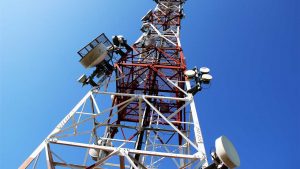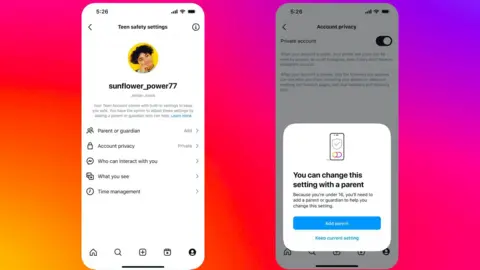Telecom
RoW: State Govts Demand N600Bn from Telcos
Telecommunications companies licensed to deploy broadband infrastructure across the country will have to cough out about N600 billion in Right of Way (RoW) charges to the 36 states of the federation.
New Telegraph reported that the fee may be the next big hurdle to cross for Nigeria to achieve ubiquitous broadband.
This amount is calculated based on the recent declaration that Nigeria requires 120,000 kilometres of fibre to achieve nationwide broadband coverage and an average of N5,000 per meter of fibre being charged by states.

This sum is, however, conservative considering the fact that some states, according to the Nigerian Communications Commission (NCC), are charging as high as N25,000 per meter of fibre.
The charges are also in defiance of a 2013 National Economic Council (NEC) recommendation of N145 per meter fee for Right of Way across states.
This recommendation was made as part of solutions towards ensuring that Nigeria achieves the 30 per cent penetration target set out in the National Broadband Plan.
According to a World Bank study, a 10 per cent point increase in fixed broadband penetration would increase Gross Domestic Product (GDP) growth by 1.21 per cent in developed economies and 1.38 per cent in developing ones. With this realisation, Nigeria came up with a broadband plan to ensure the country benefits from the global digital economy, but the plan is being dogged by myriads of challenges among which RoW is prominent.
Speaking on the current challenge with RoW, Prof. Umar Danbatta, executive vice chairman, NCC said states and in some instances, local governments, constitute stumbling blocks to fast deployment of broadband infrastructure.
According him, all Nigerian citizens are supposed to have access to broadband services, no matter their position in the society and no matter where they are, but efforts to achieve that are being frustrated by high RoW fees.
“It is unbelievable that in a country where we have a NEC document on RoW, which specifies what should be charged for a meter length of fibre deployment as N145 only, telecommunications companies are subjected to charges between N5,000, N6,000 and N25,000 by states and local government. This is really draining the efforts we are making to deploy more infrastructures,” he lamented.
Danbatta noted that the NEC recommendation, which covers the period between 2013 and 2018 is not being respected by states and pointed out that if the states had realised that the recommended charge is not in tune with the current economic realities, they should have called for a review, which would ensure that another considerable uniform fee is fixed, rather than charging indiscriminately. According to the EVC, Nigeria currently has about 38,000 kilometres of fibre, whereas, the country requires 120,000 kilometres to achieve pervasive broadband nationwide.
“One of the ways to improve quality of service is to build capacity by deploying more infrastructures, but with the challenge of RoW, service quality is affected. This is a nationwide problem and we are still talking to the states highlighting the importance of pervasive telecommunications,” he said.
Aside the Right of Way charges, telecommunications companies in the country have also been lamenting multiple taxation being introduced by states. As at the last count, the number of taxes telcos are paying across states have risen to 38.

Also speaking, Mr Olusola Teniola, president, Association of Telecommunications Companies of Nigeria (ATCON) said the country would not be able to achieve its 30 per cent broadband target with the current RoW charges across the country. “Untill the states realise the economic importance of telecommunications infrastructure and change their focus on IGR growth to economic development, we will not move forward,” he said.
Besides, Teniola said ATCON as an industry association would also continue to advocate and sensitise governments on the need to remove the RoW and multiple taxation barriers.
As part of its efforts to fast-track deployment of broadband infrastructure, , the Commission had, two years ago, licensed two infrastructure companies (InfraCos), MainOne and IHS to deploy broadband infrastructure in Lagos and North Central respectively.
However, due to the Right of Way challenge, neither of them has been able to roll out as expected. While the regulator has just licensed another four companies to cover other regions, IHS is said to have returned its own license.
Telecom
IHS Nigeria Partners Jaza Energy to Deploy Solar Hubs @ Tower Sites
IHS Nigeria, a subsidiary of IHS Towers, has formed a strategic partnership with Canadian-based energy company Jaza Energy, that will see Jaza install solar hubs at 250 towers in underserved areas of Nigeria.

Tower infrastructure company, said that the partnership will enable it to reduce the environmental footprint of its operations.
According to IHS, the hubs will provide clean energy to the towers, while the excess power generated by the solar panels at these hubs will be used to charge battery packs for local households and businesses, which it notes will reduce reliance on diesel generators.
Jaza Energy specializes in providing energy equipment and solutions, aimed at supporting homes and communities.
IHS has sought to reduce carbon emissions as part of its Project Green initiative.
The project aims to reduce kWh emissions intensity by approximately 50 percent by 2030.
The tower company has invested more than $200 million into the initiative over the past two years.
“This partnership with Jaza Energy complements this initiative, as we seek to integrate more solar solutions on our sites, and simultaneously help support local communities,” said Mohamad Darwish, CEO of IHS Nigeria.
“In this case, by helping Jaza Energy provide more local households with access to battery packs for domestic use, as substitutes for diesel-powered generators.”
Jaza Energy claims to have delivered more than three million solar battery swaps and reached more than 100,000 people in Tanzania and Nigeria with its clean energy solutions.
IHS said it expects the 250 hubs to help it achieve an emissions reduction of approximately 32,600 – 33,000 tonnes of CO2e over the seven-year agreement.
Last month, IHS Towers struck an agreement to renew and extend its Nigeria tower master lease agreements with MTN Nigeria until December 2032. The contract renewal covers approximately 13,500 tenancy contracts.
Telecom
GSMA Launches Industry-wide Responsible AI Maturity Roadmap
The GSMA has launched the first industry-wide Responsible AI (RAI) Maturity Roadmap to provide telecoms operators with the tools and guidance to test and assess their responsible use of the technology.

Recognising that the overall opportunity derived from the expanded use of AI within the telecoms sector is estimated by McKinsey to be as high as $680 billion over the next 15-20 years, the GSMA is uniting the industry in using the technology ethically and responsibly – the first time a whole sector has committed to a common approach to AI.
The roadmap, developed based on insights by McKinsey and a group of operators, will allow telecoms organisations to assess where they currently stand in terms of their existing maturity in using AI responsibly against where they want to go, i.e. their ambitions and needs. It then provides clear guidance and measurement tools to help fulfil those ambitions, while ensuring industry-wide best practice in the responsible use of the technology.
Its development follows the well-established commitments of many mobile network operators (MNOs) to ensure the exploration and integration of AI within their work has been and is done in ethical and responsible ways.
Following extensive industry consultation, the GSMA has taken these approaches and combined them with existing global regulations, recommendations and standards from international organisations including the OECD, and the UNESCO Recommendation on the Ethics of AI to create a roadmap for the whole industry to align on the use of RAI.
This initiative has been championed by Axiata, Deutsche Telekom, Orange, Telefónica and Telstra. Nineteen MNOs have already committed to using the roadmap as a way of tracking, maintaining and improving their responsible use of AI. Full details of all the MNOs already using it are available in the notes to editors.
Best-practice principles
The RAI Maturity Roadmap is underpinned by five core underlying dimensions: the vision, values and strategic goals of an organisation; its operating model and how to maintain AI governance across all operations; technical controls aligned with regulatory requirements; collaboration with third-party ecosystems; as well as corporate change management and communication strategies.
For each of these dimensions, the roadmap will guide organisations to take the appropriate steps to use AI responsibly relative to their level of maturity.
It also builds on well-established best-practice principles, including: fairness; human agency and oversight; privacy and security; safety and robustness; transparency; accountability; and environmental impact.
By providing greater clarity and a common approach to the responsible use of AI, the GSMA’s industry roadmap will give MNOs the confidence to commit to its adoption in the knowledge they are doing so in established, agreed and ethical ways, and therefore unlock the technology’s full value more quickly.
Mats Granryd, Director General of the GSMA, said: “The transformative potential of AI has long been apparent but its integration in our work and our lives must be done in a responsible and transparent way for it to be truly effective and sustainable. This roadmap will now empower more MNOs to embrace AI in the knowledge they, in line with the whole sector, are doing so responsibly and ethically.
“Responsible AI is the right way to explore and unlock the many opportunities the technology presents, and the telecoms industry is proud to lead the way as the first sector to commit to this approach – we hope others will follow our example.”
José María Álvarez-Pallete López, GSMA Board Chair and Chairman & CEO of Telefónica, said: “The speed with which AI has now become a central part of tech and telecoms operations demonstrates its power and undoubted value, but also the risks we must consider as an industry and the need to include ethics at the heart of AI to prevent its uncontrolled development.
“It is crucial for us all to ensure responsible guidelines for the use of AI are implemented now, and it is great to see the telecoms industry leading the way on this with the GSMA’s new roadmap.”
Telecom
Instagram Unveils Teen Accounts with Built-in Parental Control & Privacy
Instagram is overhauling the way it works for teenagers, promising more “built-in protections” for young people and added controls and reassurance for parents.

The new “teen accounts” are being introduced from Tuesday in the UK, US, Canada and Australia.
They will turn many privacy settings on by default for all under 18s, including making their content unviewable to people who don’t follow them, and making them actively approve all new followers.
But children aged 13 to 15 will only be able to adjust the settings by adding a parent or guardian to their account.
Social media companies are under pressure worldwide to make their platforms safer, with concerns that not enough is being done to shield young people from harmful content.
UK children’s charity the NSPCC said Instagram’s announcement was a “step in the right direction”.
But it added that account settings can “put the emphasis on children and parents needing to keep themselves safe.”
Rani Govender, the NSPCC’s online child safety policy manager, said they “must be backed up by proactive measures that prevent harmful content and sexual abuse from proliferating Instagram in the first place”.
Meta describes the changes as a “new experience for teens, guided by parents”.
It says they will “better support parents and give them peace of mind that their teens are safe with the right protections in place.”
Ian Russell, whose daughter Molly viewed content about self-harm and suicide on Instagram before taking her life aged 14, told the BBC it was important to wait and see how the new policy was implemented.
“Whether it works or not we’ll only find out when the measures come into place,” he said.
“Meta is very good at drumming up PR and making these big announcements, but what they also have to be good at is being transparent and sharing how well their measures are working.”
Teen accounts will mostly change the way Instagram works for users between the ages of 13 and 15, with a number of settings turned on by default.
These include strict controls on sensitive content to prevent recommendations of potentially harmful material, and muted notifications overnight.
Accounts will also be set to private rather than public – meaning teenagers will have to actively accept new followers and their content cannot be viewed by people who don’t follow them.
 Instagram
InstagramParents who choose to supervise their child’s account will be able to see who they message and the topics they have said they are interested in – though they will not be able to view the content of messages.
However, media regulator Ofcom raised concerns in April over parents’ willingness to intervene to keep their children safe online.
In a talk last week, senior Meta executive Sir Nick Clegg said: “One of the things we do find… is that even when we build these controls, parents don’t use them.”
Age identification
The system will primarily rely on users being honest about their ages, but Instagram already uses tools to verify a user’s age if they are suspected to be lying about their age.
From January, in the US, it will use artificial intelligence (AI) tools to proactively detect teens using adult accounts, to put them back into a teen account.
The UK’s Online Safety Act, passed earlier this year, requires online platforms to take action to keep children safe, or face huge fines.
Ofcom warned social media sites in May they could be named, shamed or banned for under-18s if they fail to comply with its new rules.
Social media industry analyst Matt Navarra said Instagram’s changes were significant but hinged on enforcement.
“As we’ve seen with teens throughout history, in these sorts of scenarios, they will find a way around the blocks, if they can.”
Questions for Meta
Instagram is not the first platform to introduce such tools for parents – and already claims to have more than 50 tools aimed at keeping teens safe.
In 2022 it introduced a family centre and supervision tools for parents, letting them see accounts their child follows and who follows them, among other features.
Snapchat also introduced its own family centre allowing parents over the age of 25 see who their child is messaging and limit their ability to view certain content.
YouTube said in September it would limit recommendations of certain health and fitness videos to teenagers, such as those which “idealise” certain body types.
Instagram’s new measures raises the question of why, despite the large number of protections on the platform, young people are still exposed to harmful content.
An Ofcom study earlier this year found that every single child it spoke to had seen violent material online, with Instagram, WhatsApp and Snapchat being the most frequently named services they found it on.
Under the Online Safety Act, platforms will have to show they are committed to removing illegal content, including child sexual abuse material (CSAM) or content that promotes suicide or self-harm.
But the rules are not expected to fully take effect until 2025.
In Australia, Prime Minister Anthony Albanese recently announced plans to ban social media for children by bringing in a new age limit for kids to use platforms.
Instagram’s latest tools put more control in the hands of parents, who will now take even more direct responsibility for deciding whether to allow their child greater freedom on Instagram and supervising their activity and interactions.
They will also need to have their own Instagram account.
But parents cannot control the algorithms which push content towards their children, or what is shared by its billions of users around the world.
Social media expert Paolo Pescatore said it was an “important step in safeguarding children’s access to the world of social media and fake news.”
“The smartphone has opened up to a world of disinformation, inappropriate content fuelling a change in behaviour among children,” he said.
“More needs to be done to improve children’s digital wellbeing and it starts by giving control back to parents.”

 Telecom2 days ago
Telecom2 days agoOver 65m GSM Lines Risk Disconnection over SIM-NIN Linkage

 News1 day ago
News1 day agoTinubu Did Not Ask Cardoso, CBN Governor to Resign – Presidency

 E-Business2 days ago
E-Business2 days agoKonga Health To Appoint Resellers for L’Oreal Dermatological Beauty Products and others Nationwide

 Telecom2 days ago
Telecom2 days agoNnamani calls for Deliberate Moves Towards AI Regulation, Data Center Growth

 E-Financial2 days ago
E-Financial2 days agoBanks, NDPC Partner to Enhance Data Security

 Telecom2 days ago
Telecom2 days agoStakeholders Harp on Importance of Unified Infrastructure to Africa Digital Leap

 News2 days ago
News2 days agoCIPM Explains Allegations on Virtual Exam Processes, Emphasizes Commitment to Excellence

 Uncategorized2 days ago
Uncategorized2 days agoNCC, ALTON, MainOne Back Oketola’s Book on Tech Evolution























